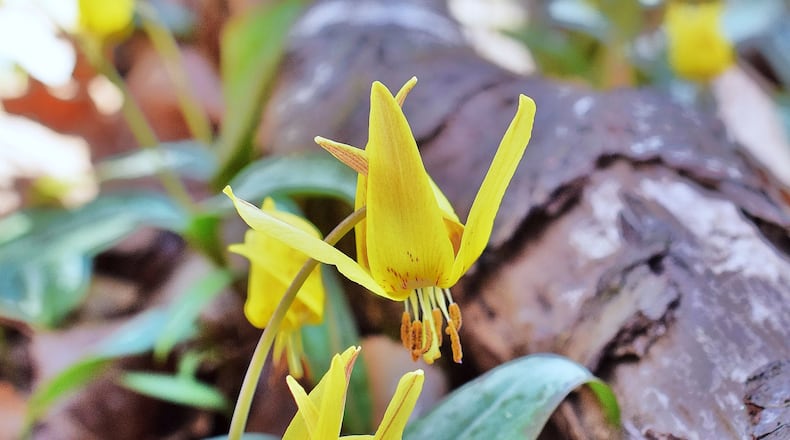Spring is on the way. We can see and hear it coming now even though we’re in mid-February — more than a month before the arrival of the vernal equinox.
The days are rapidly growing longer — 45 minutes more daylight now since winter’s first day on Dec. 21. By Feb. 20, daylight speeds up by nearly three minutes per day. The increasing daylight tells wild creatures and plants that it’s time for new life and new growth.
Already, blooming red maples are casting vibrant reddish glows in the woods and along roadsides. Rivaling them for beauty are the redbuds now coming into full bloom. Both trees are early sources of nectar and pollen for pollinators, especially a variety of bees that are emerging and buzzing about.
The Georgia Botanical Society’s first wildflower walk of the year is scheduled for Feb. 22 and Feb. 23 in Stone Mountain park. We’ll be going mostly to see yellow-flowered trout lilies, some of Georgia’s earliest wild blooms. To me, the wildflower season begins when the trout lilies bloom.
If we’re lucky, we also might see some other early bloomers, such as hepatica and trailing arbutus.
You can hear spring coming. Calling now from woods and wetlands in the evening are tiny spring peepers and upland chorus frogs. During the day, Carolina wrens are singing with gusto; joining them in song are the cardinals (male and female). Carolina chickadees occasionally chime in with spring song instead of winter twitter. Song sparrows and mockingbirds may burst out in brief songs now, and some springlike singing may come from pine warblers, house finches, bluebirds and Eastern phoebes. On warm days, mourning doves may sing full voice.
Red-tailed hawks, pileated woodpeckers and American woodcocks are performing their elaborate spring courtship displays. Black vultures are mating.
Valentine’s Day has gone, but romance still fills the air: February is prime breeding time for bobcats, coyotes, foxes, skunks, raccoons, squirrels and even mole salamanders.
And don’t forget. The Great Backyard Bird Count is this weekend: birdcount.org.
IN THE SKY: From David Dundee, Tellus Science Museum astronomer: The moon will be last quarter on Thursday. Four planets appear just after dark: Venus, in the west (sets an hour later); Mars, in the east; Jupiter, in the south; Saturn, very low in the west.
Charles Seabrook can be reached at charles.seabrook@yahoo.com.
About the Author
Keep Reading
The Latest
Featured

